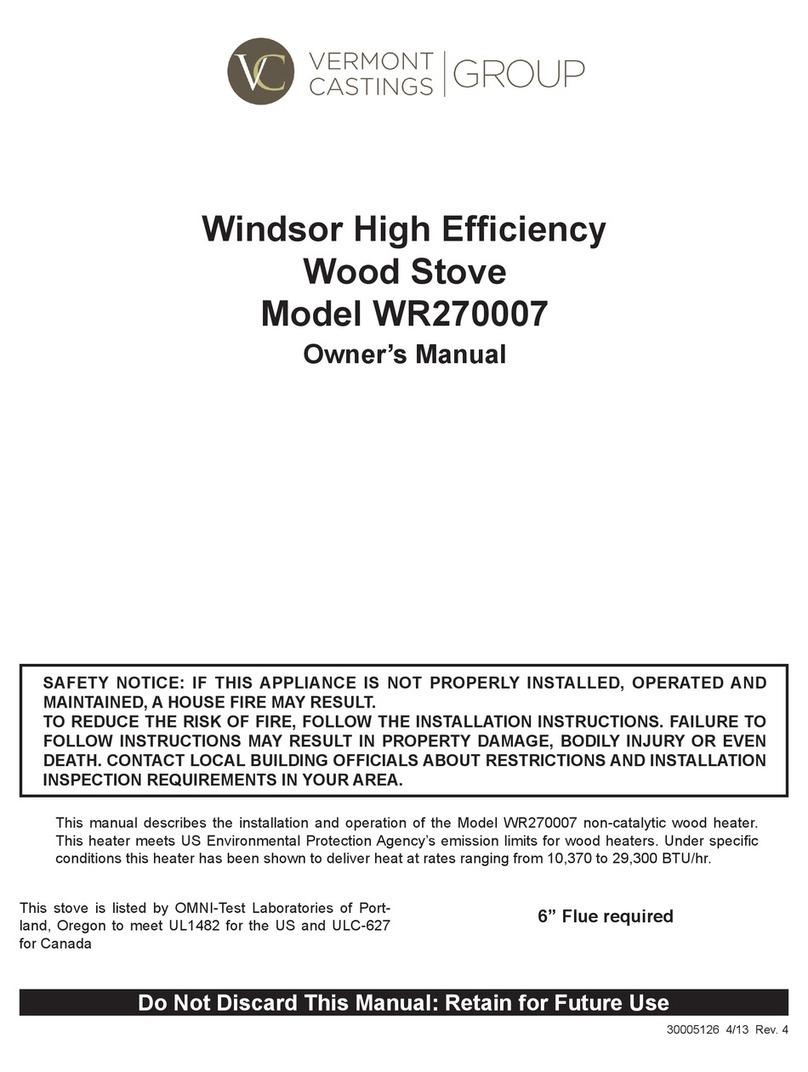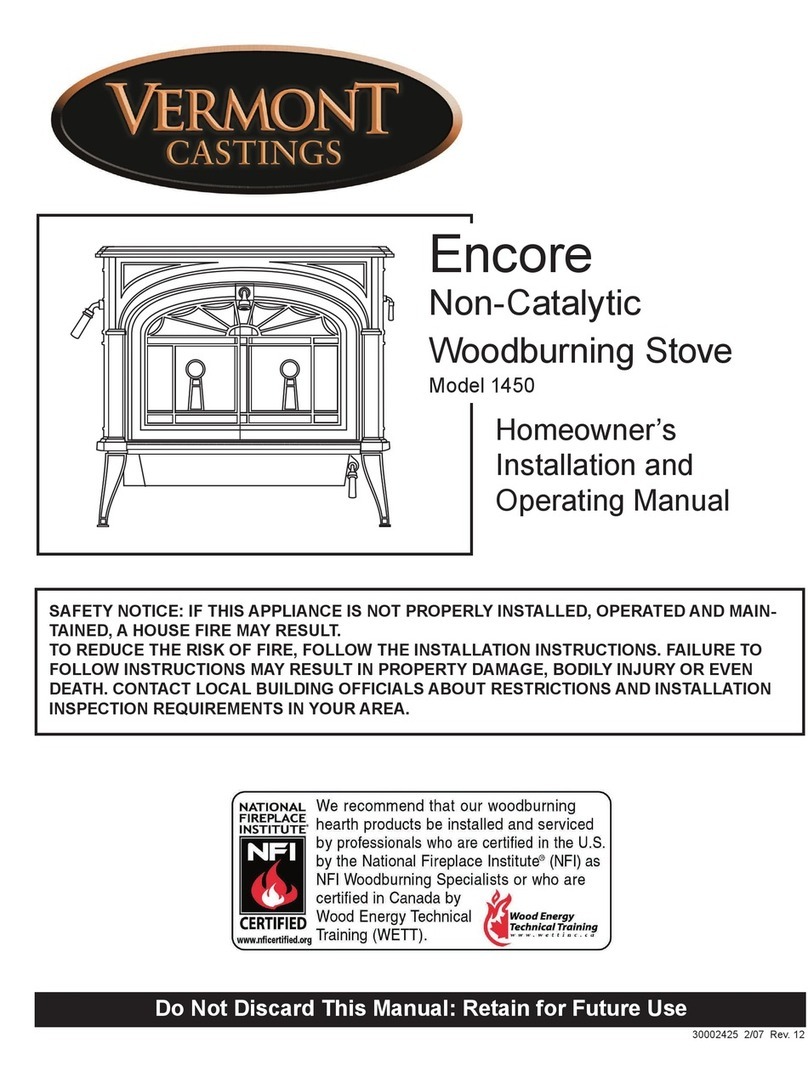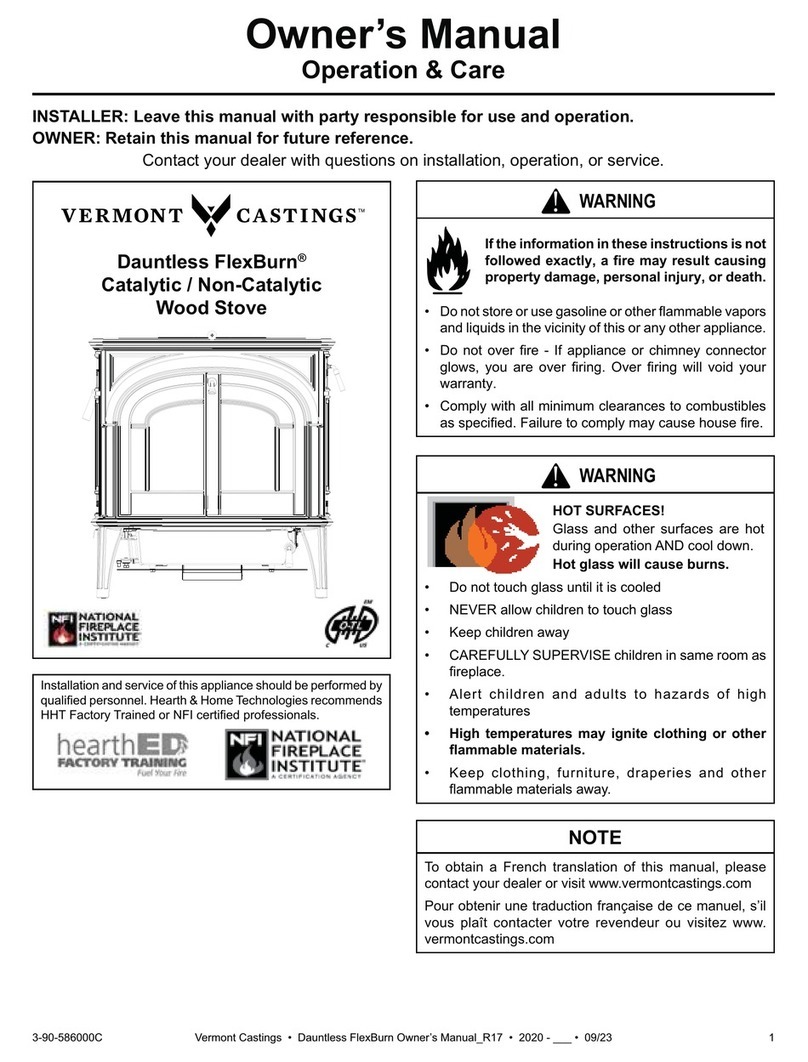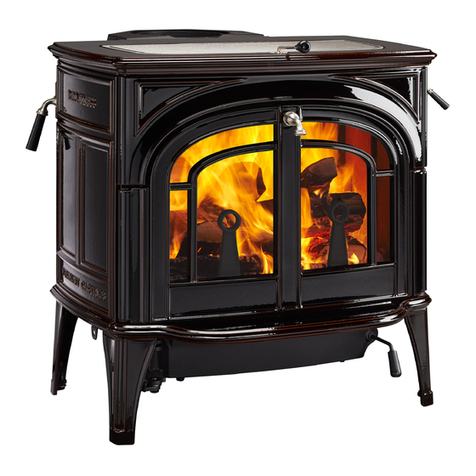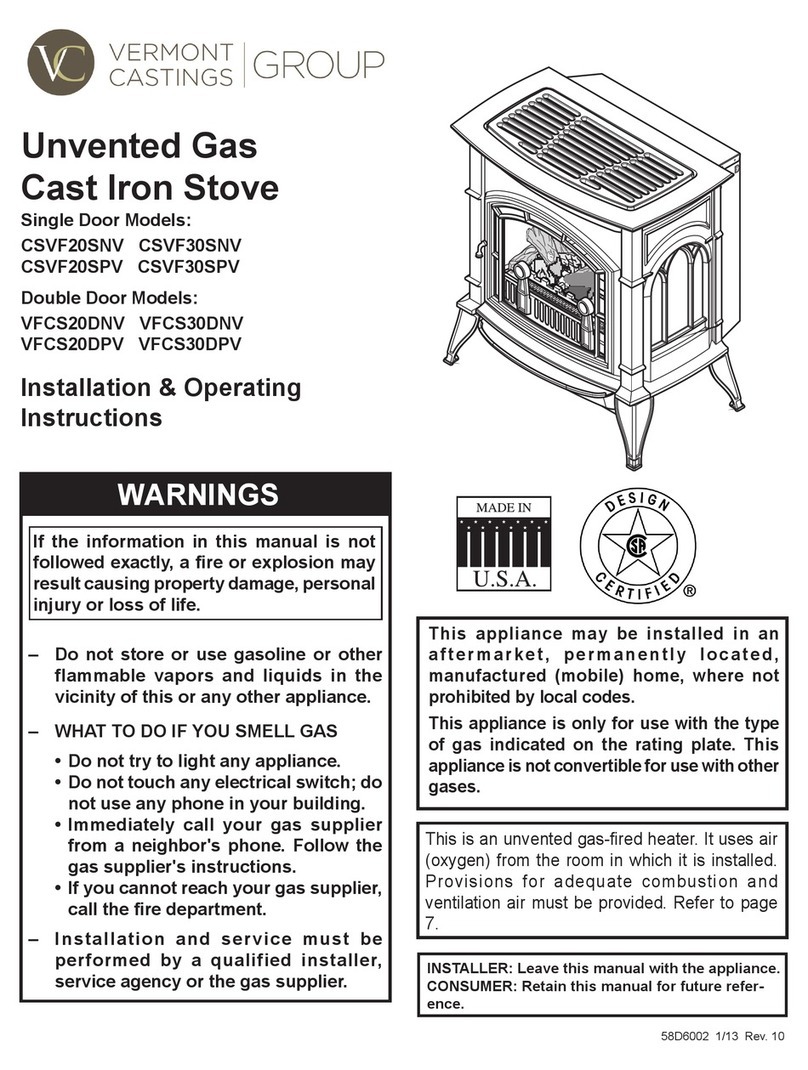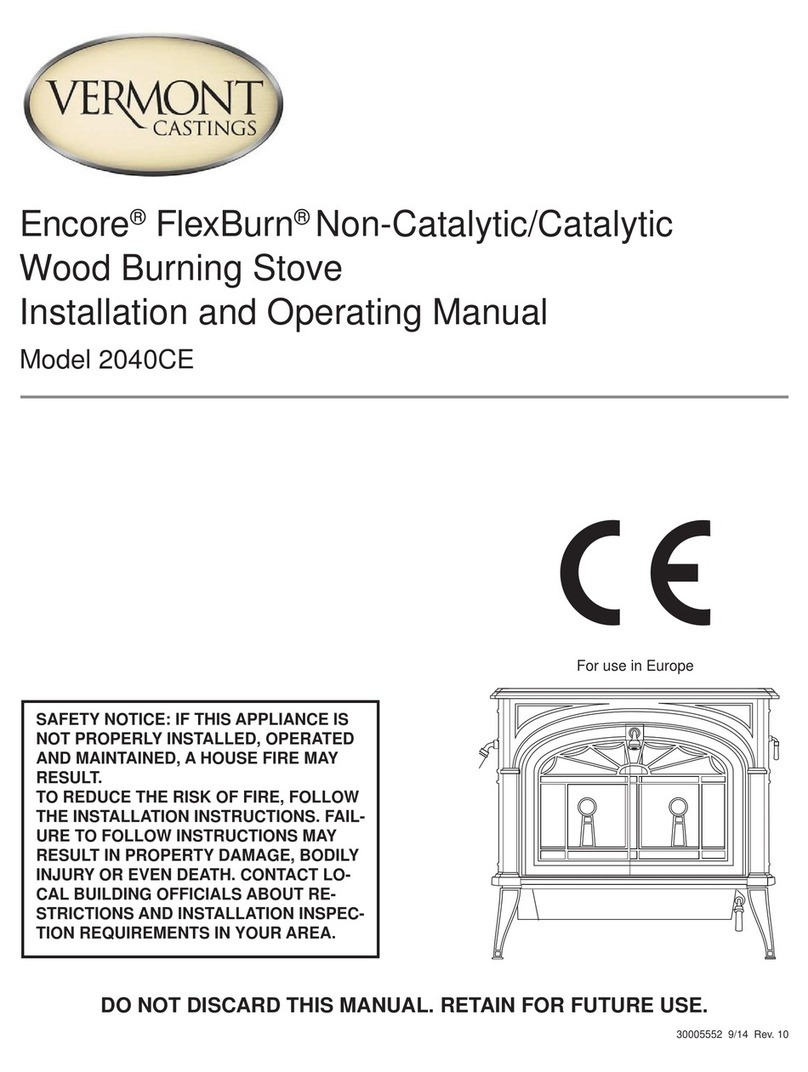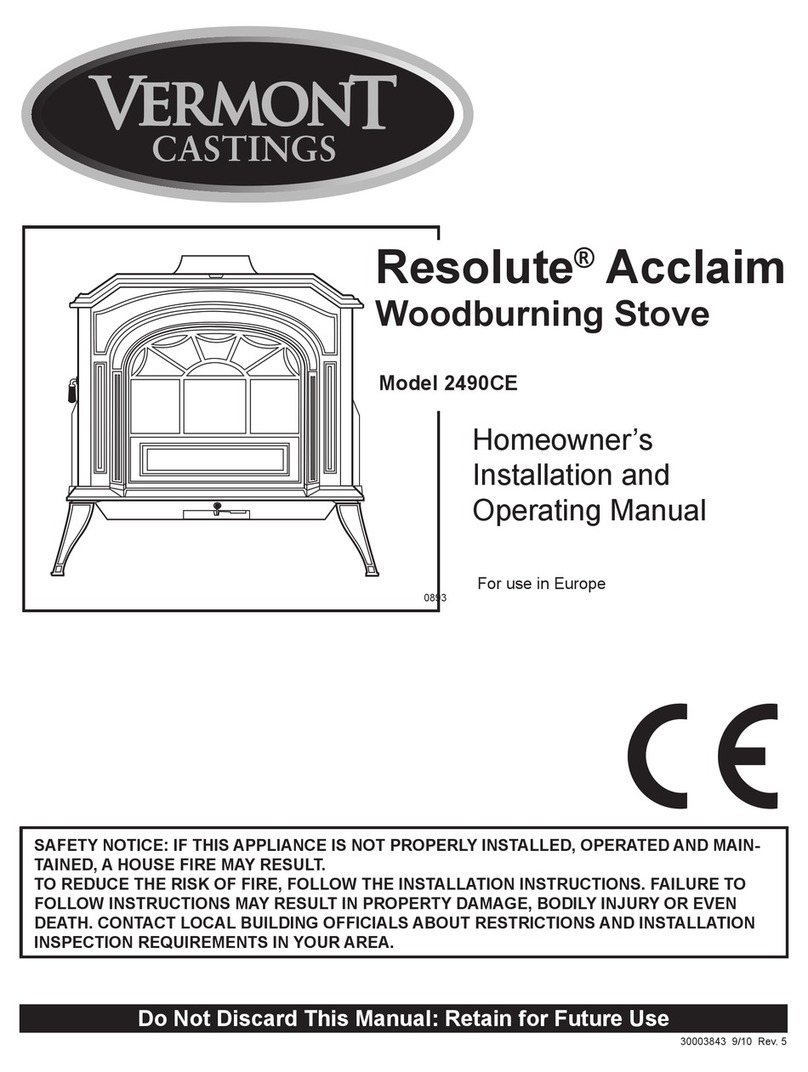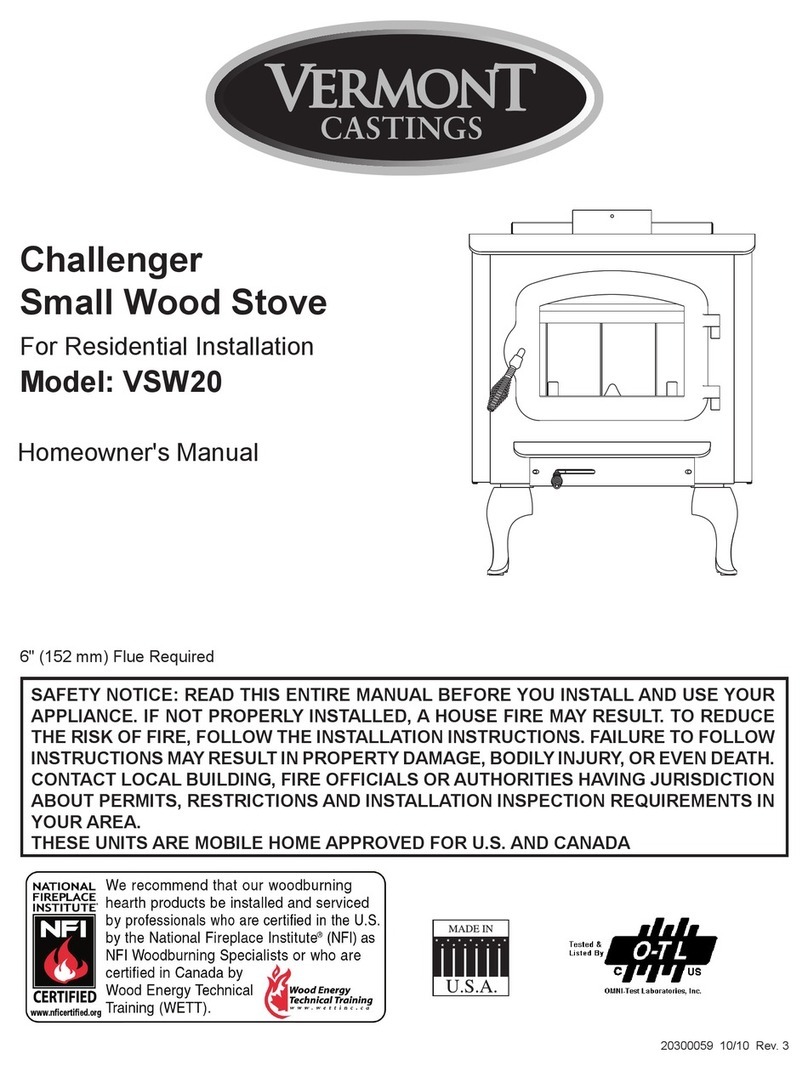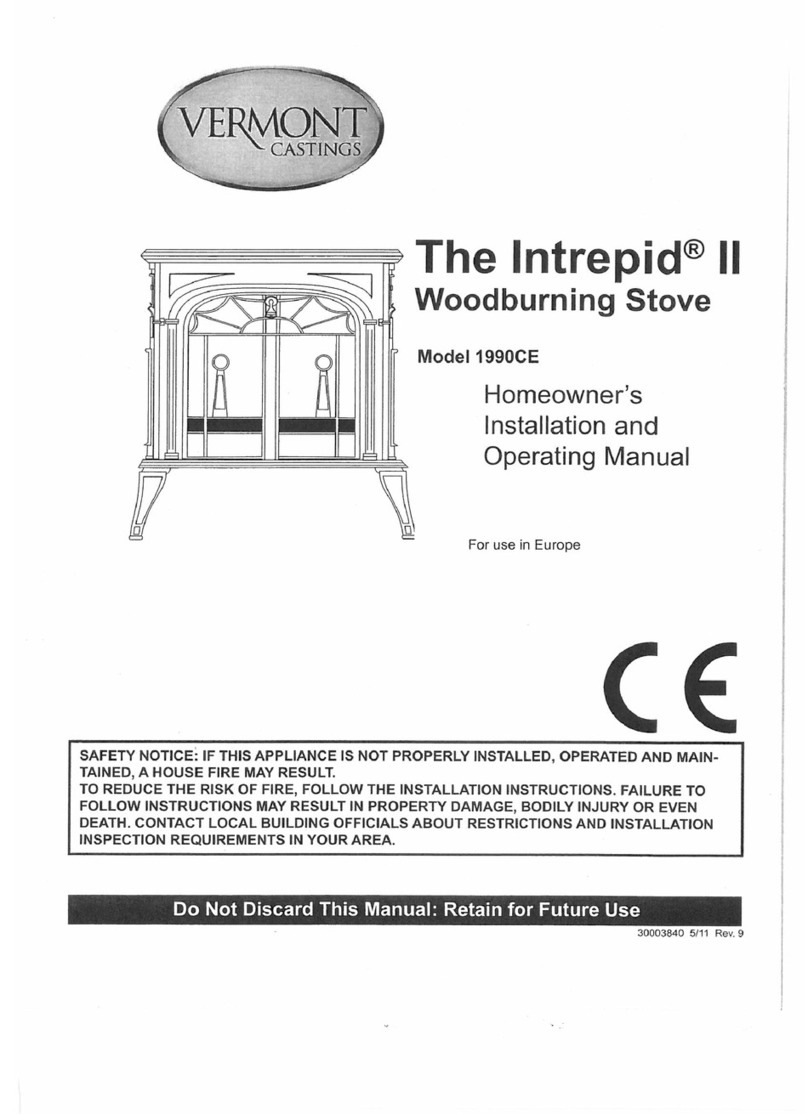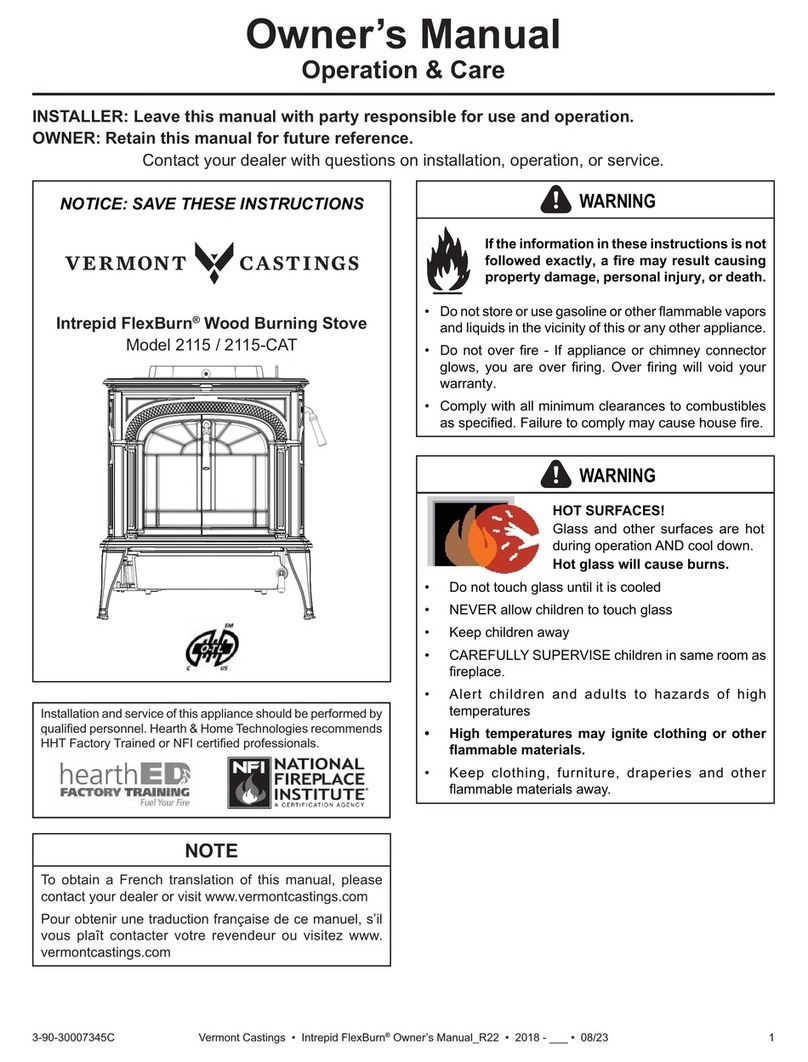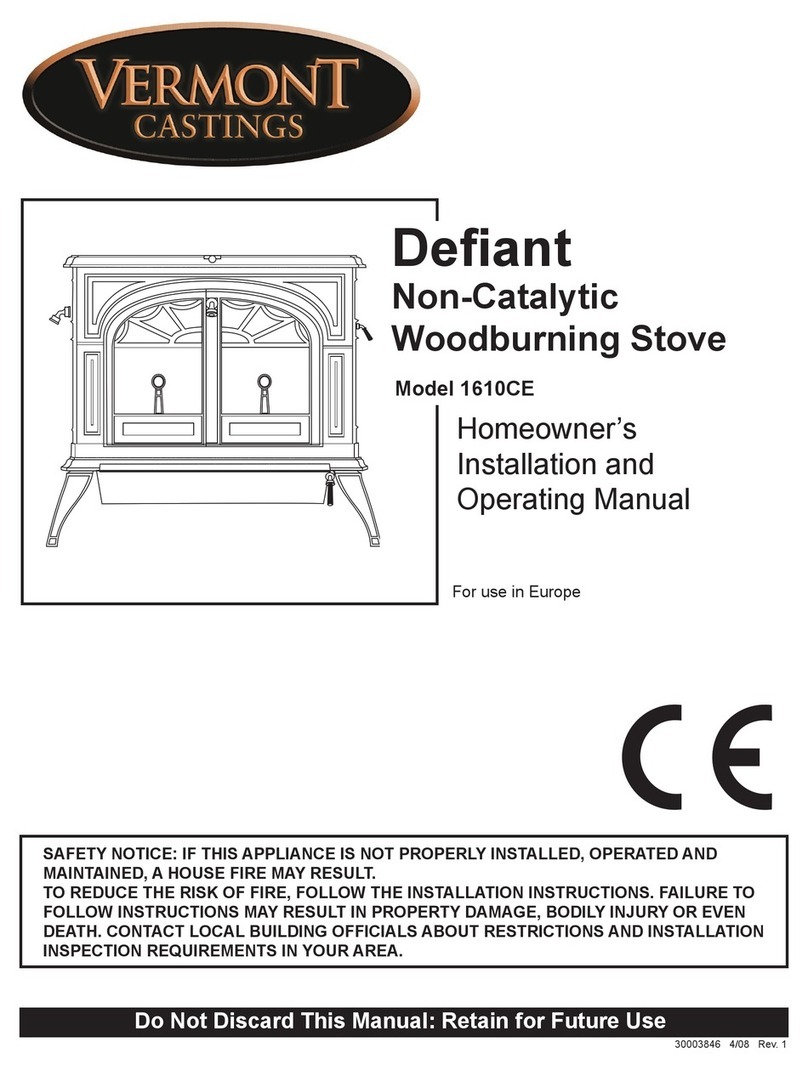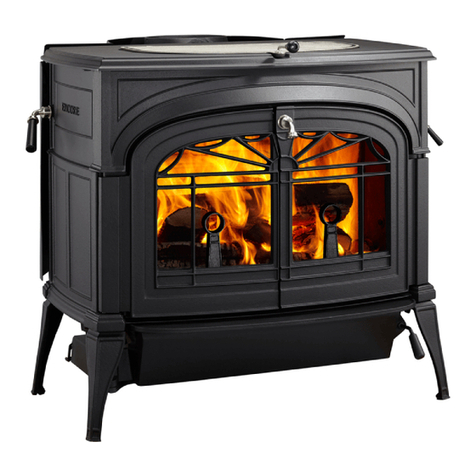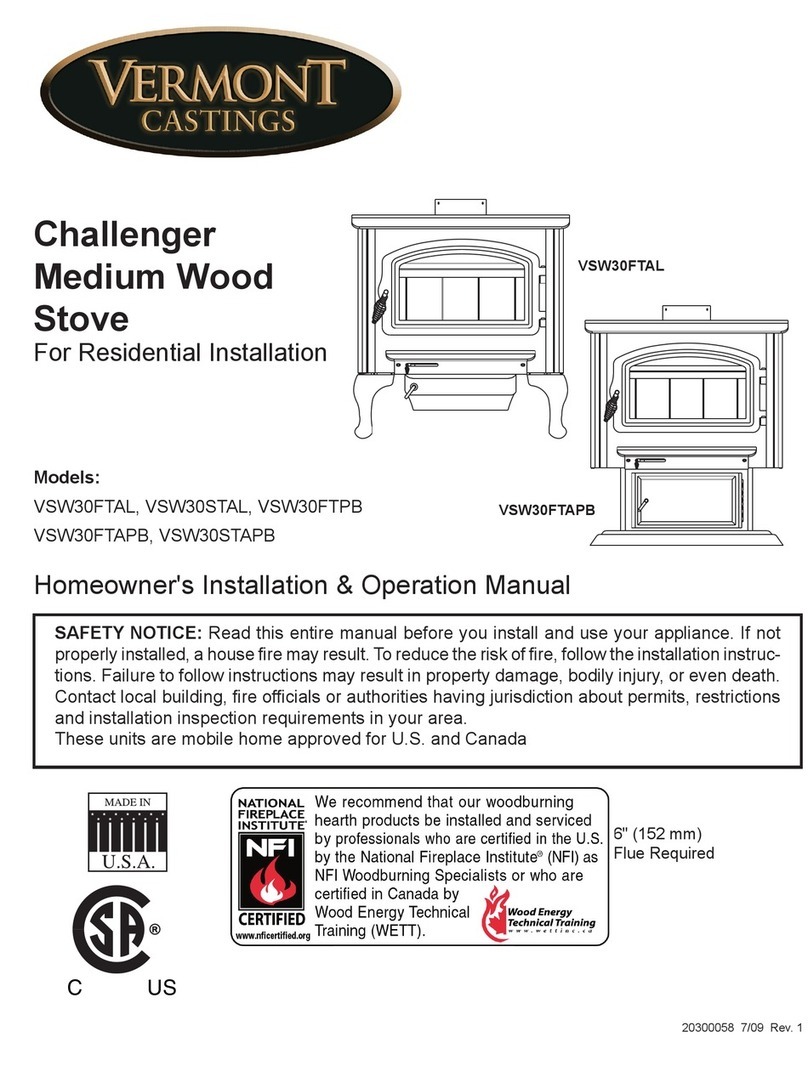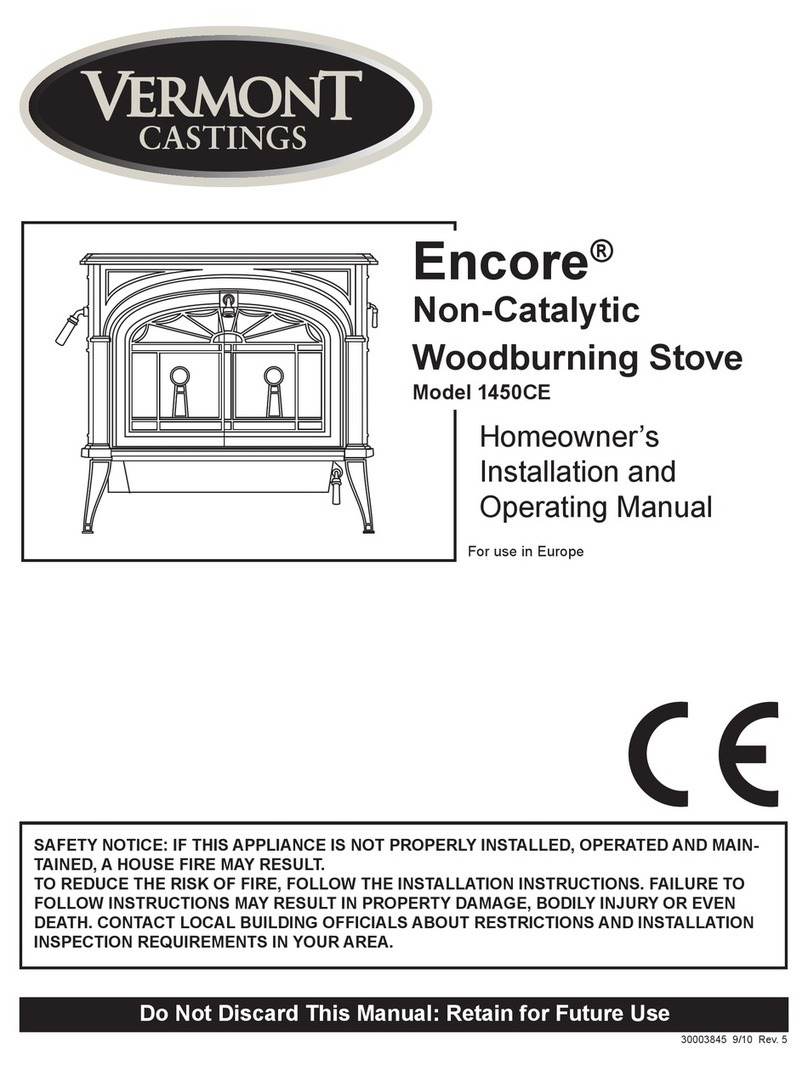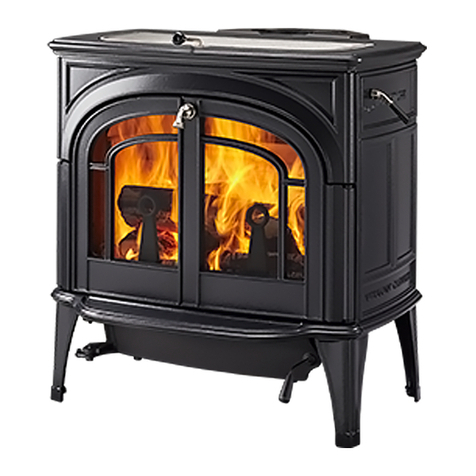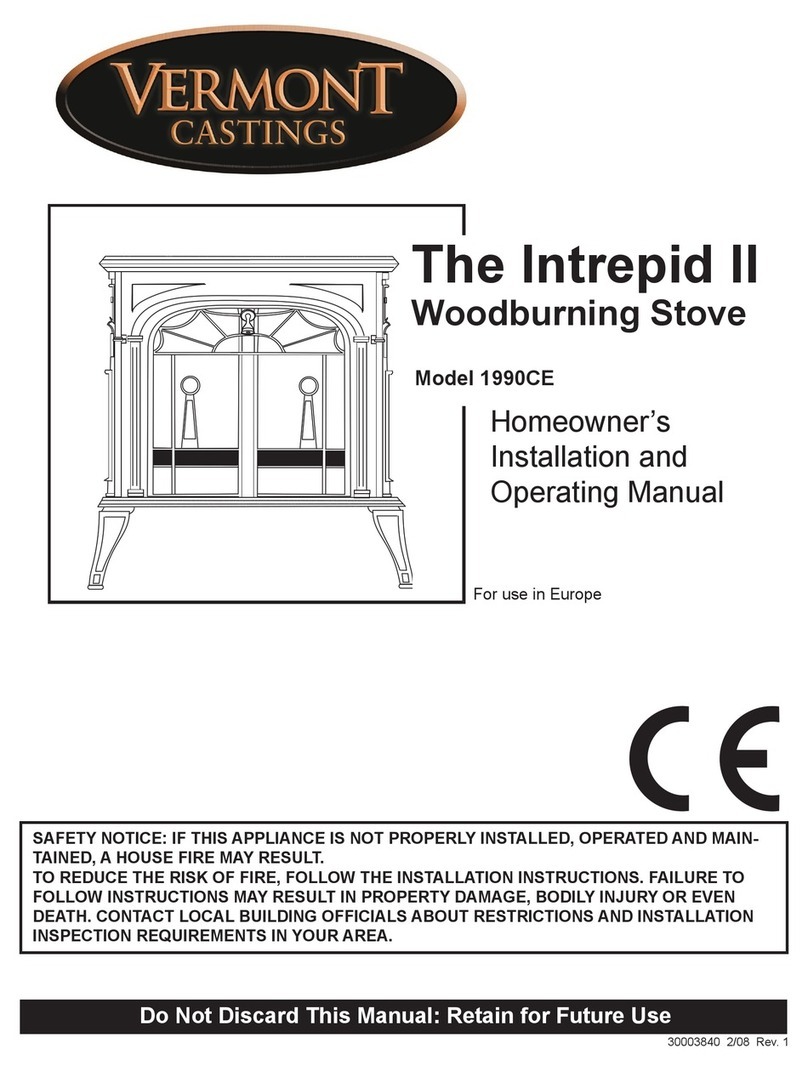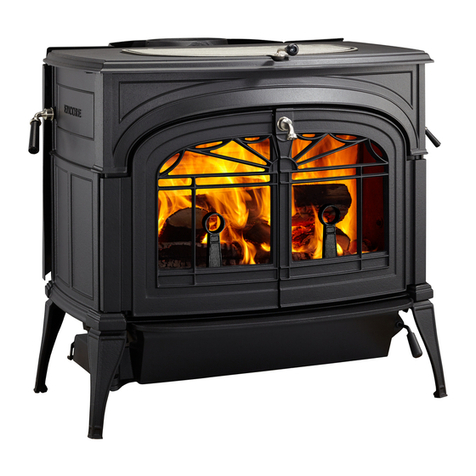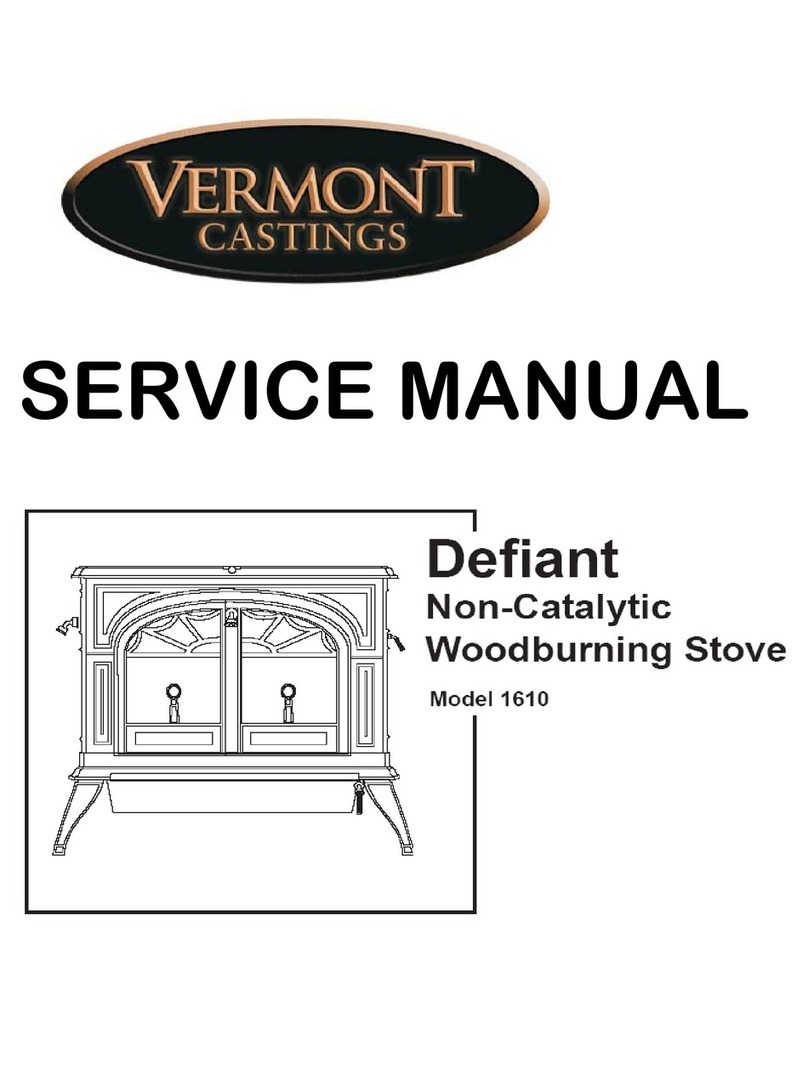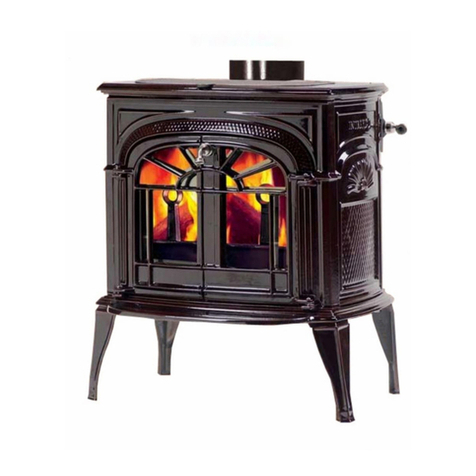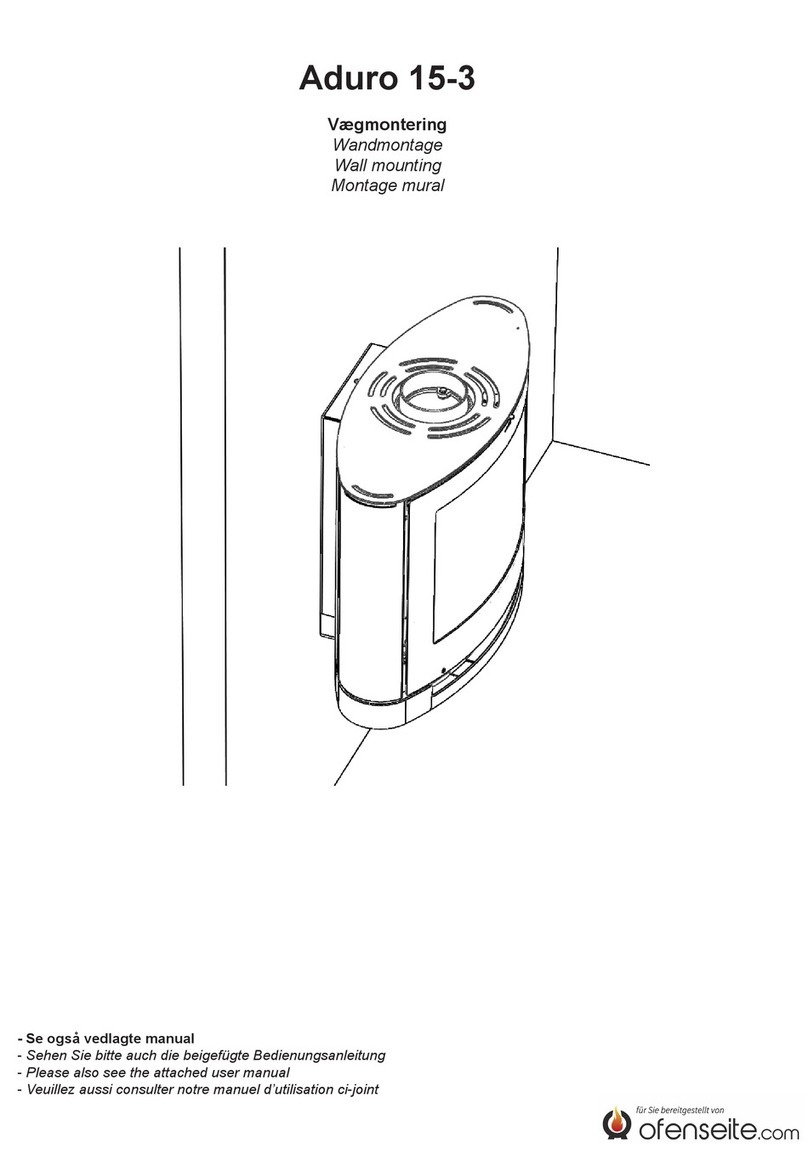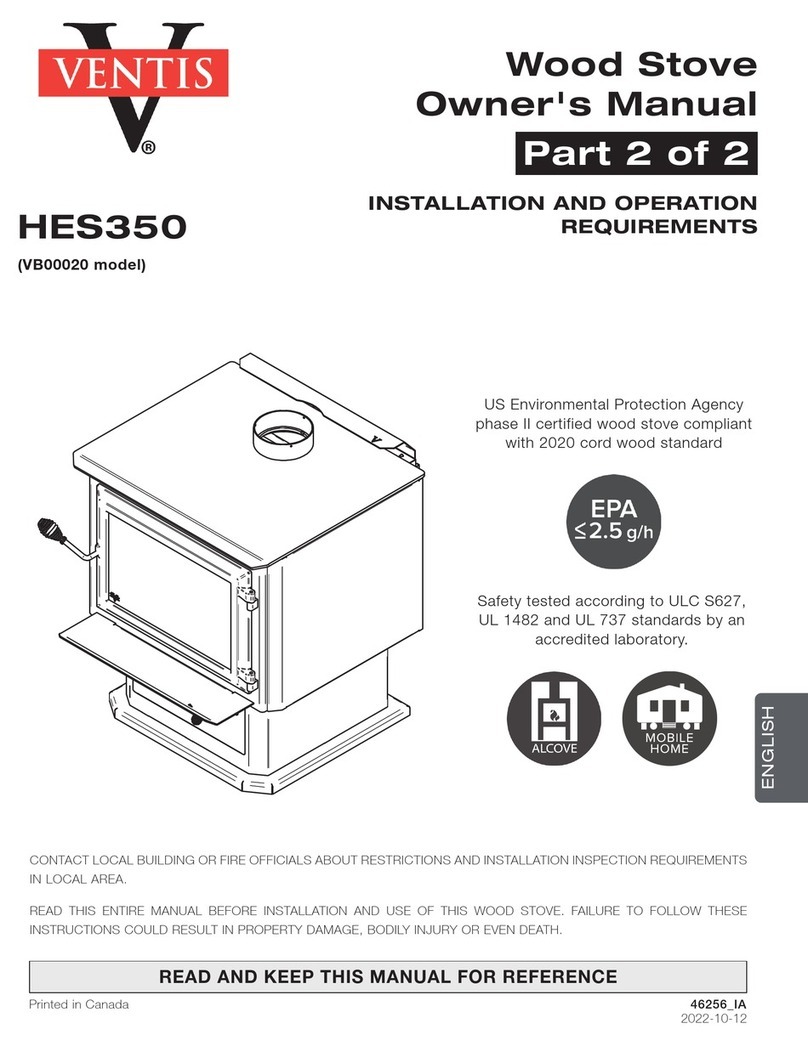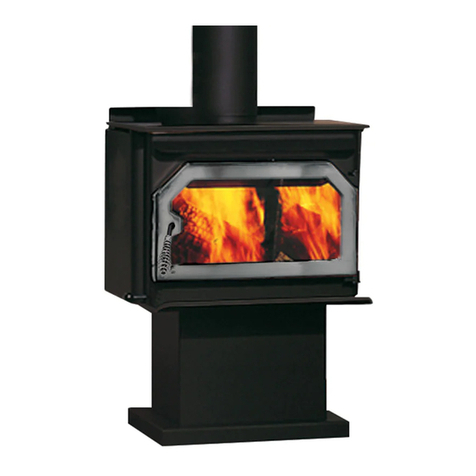
10
Encore®2040 Non-Catalytic / Catalytic Woodburning Stove
30005295
R = x T = x 0.5 = 0.59
1
k
1
0.84
1
0.29
3. If the overall R-value of the system is greater than
the R-value of the specified floor protector, the alter-
nate is acceptable.
The specified floor protector should be 1/2-
inch thick material with k-factor of 0.84. The proposed
alternate is 4” brick with an r-factor of 0.2 over 1/8”
mineral board with a k-factor of 0.29
Step a: Use formula above to convert specification to
R-value:
Step b: Calculate R of proposed system.
4” brick of r = 0.2, therefore:
Rbrick = 0.2 x 4 = 0.8
1/8” mineral board of k = 0.29, therefore
Rmineralboard = x 0.125 = 0.431
Rtotal = Rbrick + Rmineralboard = 0.8 + 0.431 = 1.231
Step c: Compare proposed system Rtotal of 1.231 to
specified R of 0.59. Since proposed system Rtotal is
greater than required, the system is acceptable.
Definitions
r = =
(ft2)(hr)(°F)
(Btu)(in)
1
k
(Btu)(ft)
(ft2)(hr)(°F)
K =
k = = K x 12
(Btu)(in)
(ft2)(hr)(°F)
R = (ft2)(hr)(°F)
Btu
Do not assume that your fireplace hearth is completely
noncombustible. Many fireplace hearths do not satisfy
the “completely noncombustible” requirement because
the brick or concrete in front of the fireplace opening
is supported by heavy wood framing. Because heat
passes readily through brick or concrete, it can easily
pass through to the wood. As a result, such fireplace
hearths can be a fire hazard and are considered a com-
bustible floor.
For all fireplace installations, follow the floor protection
guidelines described above, including the need for a
bottom shield. Keep in mind that many raised hearths
will extend less than the required clearance from the
front of the heater. In such cases, sufficient floor protec-
tion as described above must be added in front of the
hearth to satisfy the minimum floor protector require-
ment from the front of the stove: 16” (410 mm) in the
United States and 18” (460 mm) in Canada. Hearth
rugs do not satisfy the requirement for floor protection
as they are not fire proof.
Fireplace installations also have special clearance
requirements to the side walls, side decorative trim and
fireplace mantel. Refer to the information on fireplace
and mantel trim shields in this section.
Both a stove and its chimney connector radiate heat in
all directions when operating, and nearby combustible
materials can overheat dangerously if they are too close
to the heat source. A safe installation requires that ad-
equate clearance be maintained between the hot stove
and its connector and nearby combustibles.
Clearance is the distance between either your stove or
chimney connector, and nearby walls, floors, the ceiling,
and any other fixed combustible surface. The Encore
has specific clearance requirements that have been
established after careful research and testing. These
clearance requirements must be strictly observed.
In addition, keep furnishings and other combustible
materials away from the stove. In general, a distance
of 48” (1219 mm) must be maintained between the
stove and moveable combustible items such as drying
clothes, furniture, newspapers, firewood, etc. Keep-
ing those clearance areas empty assures that nearby
surfaces and objects will not overheat.
Clearance requirements are established to meet every
installation possibility, and they involve the combination
of these variables:
• When the stove pipe has no listed heat shield
mounted on it.
• When the wall has no heat shield mounted on it.
• When the wall has a heat shield mounted on it.
• When the wall and stove pipe have heat shields.
In general, the greatest clearance is required when you
place a stove and its connector near a wall with no heat
shield.
For example, when the Encore is installed using 6” con-
nector pipe parallel to the rear wall and no connector
shield is used, it must be at least 15” (381 mm) from the
wall behind it and at least 19” (483 mm) from walls on
either side. These dimensions are measured from the
back of the rear shroud and the side edge of the cast
iron top to the combustible wall.
If the Encore is installed in a corner and no shield is
used, the corners of the stove top must be at least 18Z\x”
(470 mm) from nearby walls.
Clearances may be reduced only by means approved
by the regulatory authority, and in accordance with the
clearances listed in this manual. Refer to Page 12 for
approved clearance reduction specifications.

